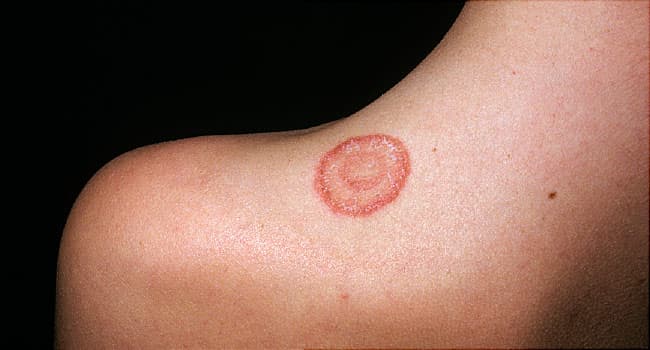
Ringworm (also called tinea or dermatophytosis) is a very common fungal infection of the skin and nails that has nothing to do with worms. (1) The condition is called ringworm because it tends to cause an itchy, red, circular or ring-shaped rash, according to the Centers for Disease Control and Prevention (CDC). It can occur just about anywhere on the body and has different names depending on which part of the body it affects.
Causes of Ringworm
Ringworm often resembles other conditions, including eczema (atopic dermatitis). Eczema is a condition that makes your skin red and itchy. (19) Like ringworm, it’s common in children, but anyone can get eczema. Symptoms include itching, and red to brownish-gray patches on the skin.
HIV (human immunodeficiency virus) is a virus that attacks the immune system, making you more vulnerable to other infections and diseases (including ringworm). (20) It is spread by contact with certain bodily fluids of a person with HIV. Without treatment, HIV can lead to AIDS (acquired immunodeficiency syndrome).
How Is Ringworm Diagnosed?
Your healthcare provider might be able to tell whether you have a ringworm infection just by looking at it.They also might take skin scrapings from the affected area.
The American Academy of Family Physicians notes that diagnosing ringworm can be a little tricky, because it often resembles other conditions. For example, tinea corporis might be confused with eczema, psoriasis, or seborrheic dermatitis; tinea capitis might be confused with alopecia areata; and ringworm of the toenails can look like dystrophic toenails (changes in texture and composition) caused by trauma to the nails. A ringworm diagnosis can be confirmed with a fungal culture.
Duration of Ringworm
Ringworm symptoms usually appear between 4 and 14 days after the skin comes into contact with dermatophytes.
Antifungal medicine may clear up a ringworm infection quickly, eliminating symptoms in just a few days.
When treated with nonprescription antifungal medication, ringworm on the skin like tinea pedis (athlete’s foot) and tinea cruris (jock itch) typically clear up within two to four weeks. Tinea capitis (ringworm on the scalp) usually needs to be treated with prescription antifungal medication for one to three months.
Complications of Ringworm
A fungal infection rarely spreads below the surface of the skin, so it’s very unlikely to cause serious illness. But untreated ringworm can sometimes cause the fungus to grow in deeper levels of the skin. Known as Majocchi’s granuloma, this rash consists of raised bumps and pustules and can be difficult to treat.
People with weak immune systems, like those who have HIV/AIDS, may find it challenging to get rid of ringworm.
Click here to learn about Ringworm Treatment.